Life Sciences Building, Room 206
501 S. Nedderman Drive
Box 19047
Arlington, TX 76019
Deans of the College of Science
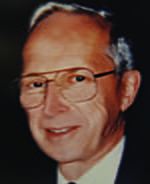
Peter R. Girardot (1966-73)
Girardot was born in Detroit, Michigan on August 15, 1922. He served in the U.S. Navy during World War II, then returned to Michigan and earned an B.S. in Chemistry from the University of Detroit in 1944. For the next year he served as a group leader in the physics division of the Manhattan Project at the University of Chicago, where he researched nuclear technology. In 1945 he became a research associate in the Applied Physics Laboratory at Johns Hopkins University in Baltimore, and the following year he worked as a patent agent at the Naval Research Laboratory in Washington, D.C. He then started graduate school at the University of Michigan, where he received an M.S. in Chemistry in 1948 and a Ph.D. in Chemistry in 1952. He took a job as a group leader with Bjorksten Research Laboratories in Madison, Wisconsin, then in 1955 he started a decade-long stint as a senior supervisor in exploratory inorganic chemistry at Pittsburgh Plate Glass Co. in Pittsburgh. He was hired as a chemistry professor by Arlington State College (now UTA) in early 1966 and on September 1 became the first dean of the School of Science (later renamed the College of Science). Under his guidance, the College of Science won approval for its initial master’s programs, beginning in 1966 with math and physics, followed by biology and chemistry in 1968 and geology in 1970. One of his points of emphasis was lab safety protocol, which was given a full overhaul. In addition to his administrative abilities, Girardot was also a nationally recognized researcher in inorganic chemistry. His areas of research interest included Mossbauer spectroscopy; metal cluster compounds; and alleviating air pollution and the amount of metals present in roadside soil. He served as dean until September 1973, when he stepped down to focus on research and teaching. He was a gifted and student-oriented teacher; he won the Outstanding Educator of America Award in 1985 and the Amoco Foundation Outstanding Teacher Award in 1982. He also developed a popular class, Wine Making and Fermentation Science; Girardot was descended from six generations of French wine makers. He held 11 patents; authored or co-authored numerous publications; served on the editorial board for the prestigious Journal of the American
Chemical Society from 1966-76; and reviewed articles for various journals. He died on September 2, 2000 at age 78, just four months after retiring and being named professor emeritus.
Chemical Society from 1966-76; and reviewed articles for various journals. He died on September 2, 2000 at age 78, just four months after retiring and being named professor emeritus.

William 'Bill' R. Meacham (acting dean 1973-74)
Meacham was born in Fort Worth on January 12, 1923. He attended North Texas Agricultural College (now UTA) in 1941-42 and went on to Texas A&M University from 1942-43. In 1943 he was drafted by the U.S. Army and served in the European Theater of World War II as part of the highly decorated 99th Infantry Division. He was awarded multiple medals for his service during the war. He returned to college in 1946 and in 1948 he earned a B.S. in Biology (Wildlife Management) from Texas A&M. He went on to receive an M.S. in Biology from North Texas State Teachers College (now the University of North Texas) in 1950, and a Ph.D. in Zoology from UT Austin in 1958. He came to UT Arlington (then named Arlington State College) as an assistant professor of biology in 1950, taking a leave of absence from 1953-55 to do doctoral study. He was promoted to associate professor in 1955, and in 1963 he was promoted to professor and named chair of the Department of Biology. He stepped in to serve as acting dean of the College of Science when Peter Girardot stepped down in 1973 and served in that capacity for a year. His areas of research included vertebrate ecology; vertebrate evolution and speciation; zoology; genetics; and vertebrate taxonomy. He served for years as chair of the Arlington public schools’ Science Fair, held annually at UTA, and also served in various capacities on numerous department and university committees. In January 1988 he retired from UTA and was named professor emeritus. He died September 22, 2020 in Fort Worth at the age of 97.
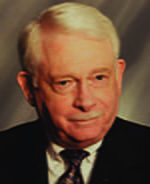
Howard J. Arnott (1974-90)
Arnott was born in Los Angeles on March 9, 1928. After serving in the U.S. Navy from 1946-48, he went on to earn an A.B. in Botany with a minor in Zoology from the University of Southern California in 1952, an M.S. in Botany from USC in 1953, and a Ph.D. in Botany from the University of California at Berkeley in 1958. He spent six years as an assistant professor at Northwestern University in Evanston, Illinois before leaving for UT Austin, where he spent a year as a postdoctoral fellow at the Cell Research Institute. From 1965-72 he worked at UT Austin as an associate professor, professor and acting chair in the Department of Botany. From 1972-74 he was professor and chair of the Department of Biology at the University of South Florida. In 1974 Arnott accepted an offer to join UT Arlington as dean and professor of biology. He went on to become the longest-tenured dean in the College of Science’s history, serving for 16 years. He also served as director of UTA’s Center for Electron Microscopy from 1984-2008. His research interests included the development of biological crystals; calcification in higher plants and fungi; mineralization in plant pathogens; reflecting systems in the eyes and skin of vertebrates. He delivered over 400 lectures and invited talks and authored or co-authored over 400 papers and abstracts. He also served as chair or member of various committees at UTA and also as an editor or reviewer for various scientific journals. From 1991-96 he held the title of Ashbel Smith Professor of Biology and from 1996-2008 he was the Jenkins Garrett Professor of Biology. He retired from UTA in 2008 and was named professor emeritus and dean emeritus in 2009.

S. Peter Rosen (1990-96)
Rosen was born in London, England in 1933 and earned a B.A. in Mathematics from Oxford University in 1954. He went on to receive both an M.A. and Ph.D. in Theoretical Physics from Merton College, Oxford University, in 1957. He was a physics professor at Purdue from 1962-84, and from 1983-90, he was an associate division leader for nuclear and particle physics at the Los Alamos National Laboratory. He became a naturalized American citizen in 1972. In 1990 he came to UT Arlington to become College of Science dean. As a visiting scientist at the Superconducting Super Collider in Waxahachie from 1990-93, he helped develop the project, which became a victim of federal budget cuts in 1993. In 1996 he left UTA to become associate director of the Department of Energy’s Office of High Energy and Nuclear Physics. While there he helped to secure American participation in an international consortium building the Large Hadron Collider, a high-energy particle accelerator project near Geneva in which UTA physicists have been heavily involved. He was named UTA professor emeritus in 2000. In 2003 he became senior science advisor to the director of the Department of Energy's Office of Science. In the field of theoretical physics, he was most widely recognized for work that began in the 1950s on a neutrino phenomenon known as double beta decay, a rare but naturally occurring form of radioactivity. The research has had implications for explaining the composition of unseen ‘dark matter,’ believed to be a powerful influence behind the expansion and evolution of the universe. Rosen died of pancreatic cancer on October 13, 2006 at his home in Rockville, Maryland, at age 73. His obituary in the New York Times said he “combined pioneering studies of the subatomic particles called neutrinos with an administrative role in helping to guide federal research in high-energy physics.”

Verne C. Cox (interim dean 1996-98)
Cox was born in Newport, Rhode Island on August 31, 1938. He earned a B.A. from UT Austin in 1960, an M.A. in Psychology from the University of Houston in 1962 and a Ph.D. from the University of Houston in 1964. He worked as a research scientist from 1964-70 at the Fels Research Institute for the Study of Human Development in Yellow Springs, Ohio before coming to UTA in 1970 as an associate professor of psychology. At UT Arlington, he established a research laboratory that focused on brain systems involved in pain and analgesia and brain systems involved in food intake and body weight regulation. With Psychology Department colleagues Paul Paulus and Garvin McCain, he also did groundbreaking research on the effects of overcrowding in prisons in the 1970s and 1980s. He was promoted to full professor in 1973. In 1974 he was awarded The University of Texas at Arlington Distinguished Research Award. He was also a popular teacher who twice was named UTA College of Science Teacher of the Year (1981, 1996). He served as chair of the Psychology Department from 1982-88 and as interim Dean of Science from 1996-98. He retired in 1998 and was named professor emeritus. He returned to UTA in 2000 and taught part-time until May 2015.
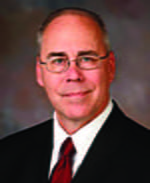
Neal J. Smatresk (1998-2004)
Smatresk was born in New York on July 9, 1951 and earned a B.A. in Biology from Gettysburg College in 1973, an M.A. in Biology from the University at Buffalo, The State University of New York, in 1978 and a Ph.D. in Zoology and Marine Science from UT Austin through its Marine Science Institute at Port Aransas in 1980. He came to UTA in 1982 as an assistant professor of biology; he was promoted to associate professor in 1988 and to professor in 1994. From 1994-98 he served as chair of the Department of Biology and he was named dean of the College of Science in 1998. At UTA, his research focused on how the respiratory neurobiology of vertebrates changes during the evolutionary transition from aquatic breathing to aerial breathing. In 2004 he left UTA to become vice chancellor for academic affairs at the University of Hawaii at Manoa. In 2007 he took a position at the University of Nevada, Las Vegas as executive vice president and provost, becoming acting president in July 2009 and president in August 2009. In 2014, he became president of the University of North Texas in Denton.
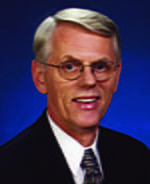
Paul B. Paulus (2004-09)
Paulus was born in the Netherlands during World War II and moved to the United States with his family in 1957. He earned a B.S. in Psychology from Otterbein College in Ohio in 1966, an M.S. in Psychology from the University of Iowa in 1970 and a Ph.D. in Psychology from the University of Iowa in 1971. He came to UTA in 1970. In the 1970s and 1980s he teamed with Department of Psychology colleagues Verne Cox and Garvin McCain to publish groundbreaking research on the effects of overcrowding in prisons. He served as associate dean of the College of Science from 1998-99 and then as chair of the Department of Psychology from 1999-2004. In 2004, he began a five-year tenure as dean of the College of Science. For over 20 years he has been investigating the factors that influence group creativity and has published over 60 papers and chapters on that topic and the related issue of team innovation. His research has been supported by major grants from the National Science Foundation and other sources. Among the many awards he has received are the UTA Outstanding Research Achievement Award in 1989 and the UTA Distinguished Record of Research Achievement in 2007. He was named a Distinguished Professor by UTA in 2010, and was named to UTA’s Academy of Distinguished Scholars that same year. In May 2020 he retired from full-time status after an illustrious 51-year career at UTA.

Pamela E. Jansma (2009-14)
Jansma was born in Tokyo, Japan, and also lived in Chicago, the Netherlands and Scarsdale, N.Y., while growing up. She earned a B.S in Geology from Stanford University, and M.S. and Ph.D. degrees in geological sciences from Northwestern University. She served as associate professor and associate dean for research and academic affairs for the College of Arts and Sciences at the University of Puerto Rico, Mayagüez, then became professor and chair of the Department of Geosciences at the University of Arkansas before becoming professor and dean of New Mexico State University’s College of Arts and Sciences. She came to UT Arlington in 2009 as the first female dean of the College of Science as well as a professor of earth and environmental sciences. Her research interests include microplate tectonics and strain partitioning, as well as using the Global Positioning System to examine deformation of Earth's surface with emphasis on active tectonics of the Caribbean region. She has published numerous articles in scientific journals, and her research has received funding from the National Science Foundation, Department of Defense and NASA, among other sources. Jansma left UTA to become dean of the College of Liberal Arts and Sciences at the University of Colorado in Denver in August 2014.
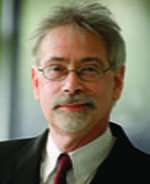
James P. Grover (interim dean 2014-15)
Grover was born in Binghamton, New York on September 15, 1959. He earned a B.A. in Environmental Science at State University of New York in Purchase, N.Y., in 1982 and a Ph.D. in Ecology at the University of Minnesota in 1988. He spent the next four years as a postdoctoral researcher at the Max Planck Institute of Limnology in Germany and Imperial College at Silwood Park, U.K. He came to UT Arlington in 1993 as an assistant professor of biology and was promoted to associate professor in 1998 and to professor in 2006. His areas of research interest include algal ecology, microbial ecology, theoretical ecology, and water quality in lakes, rivers and reservoirs. He is well known for his theoretical and experimental studies of competition between species for resources and of ecological stoichiometry, the formulation and analysis of ordinary and partial differential equations models of interacting populations, and the ecological study of the toxic fish-killing alga, Prymnesium parvum (“golden algae”). His research has been continually supported by grants from the National Science Foundation and other agencies. He received the UTA Outstanding Research Achievement Award in 1998. He became associate dean for research and graduate studies in April 2012 and served as interim dean for a year (2014-15) while the search for a permanent dean was conducted. He returned to his role as associate dean in August 2015.
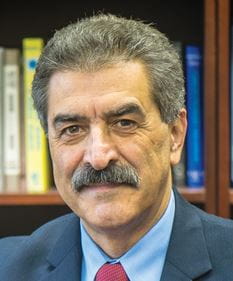
Morteza G. Khaledi (2015-present)
Khaledi joined the College of Science as its 10th dean in August 2015. He was born in Iran and earned a B.S. in Chemistry from the University of Shiraz (Iran) in 1978 and a Ph.D. in Chemistry from the University of Florida in 1984. He spent a year as a postdoctoral associate at the University of Florida before joining the faculty at the University of New Orleans as an assistant professor in 1985. In 1988 he joined North Carolina State University as an assistant professor of analytical chemistry. He was promoted to associate professor in 1991 and to full professor in 1997, and he led the Department of Chemistry as chair from 2005-11 and again from 2014-15. As department chair at N.C. State, he successfully increased funding for research from federal and state agencies, foundations and corporations; initiated curricular reforms at the undergraduate and graduate levels; led the creation of a strategic plan which promoted collaborative and interdisciplinary research; implemented a review of the graduate program which led to increased funding for student recruitment; and created new programs aimed at improving student success and access. As a chemist, Khaledi is a renowned expert in mechanistic studies and bioanalytical applications of high performance capillary electrophoresis and high performance liquid chromatography. His research has been funded by the National Institutes of Health and the National Science Foundation, among other sources, and he has authored or co-authored over 100 papers.